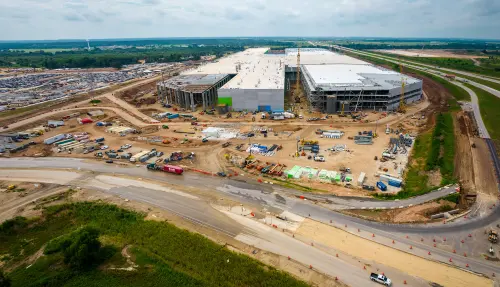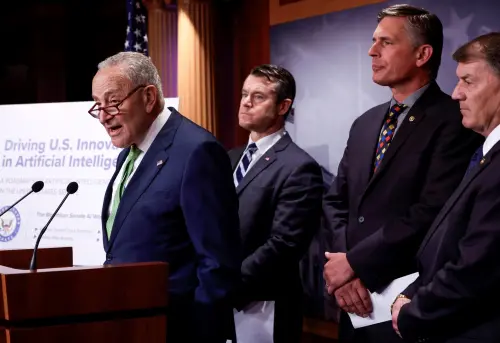Underrepresented people and places seem to be missing out on two federal programs that seek to boost technological innovation among small businesses.
Together billed as America’s Seed Fund, the Small Business Innovation Research (SBIR) program and its companion Small Business Technology Transfer (STTR) program are managed by the Small Business Administration (SBA) and delivered in collaboration with 11 federal agencies.
The highly competitive award-based programs seek to boost early-stage research and accelerate technology transfer through non-dilutive federal R&D funding, with four congressionally mandated goals: using small business to meet federal R&D needs; increasing private sector commercialization derived from federal R&D; stimulating technological innovation; and fostering and encouraging participation by minority and disadvantaged persons.
In service of those goals, winning entrepreneurs generally receive awards of up to $275,000 (for Phase I awards) or $1.8 million (for Phase II) as incentives to pursue high-risk projects, validate their concepts, and effectively accelerate technology development. Consequently, the program is an important tool for energizing regional innovation economies, especially given the current decline in seed funding for firms and the skew of private VC capital toward dominant coastal metro areas.
And yet, the programs continue to miss opportunities to deliver on their promise of improving the inclusion of underrepresented people and places in America’s technology economy.
Accordingly, this post builds on earlier work by Brookings Metro’s Joe Parilla and Sifan Liu to explore new information on how firms in varied types of regions currently participate in the SBIR/STTR program and discusses ways to increase participation, including as the nation implements a new set of very complementary “place-based” tech initiatives ranging from the National Science Foundation’s Regional Innovation Engines program and the Economic Development Agency’s Regional Technology and Innovation Hubs initiative.
Ultimately, the post concludes that many groups and regions are underrepresented in the program and that new initiatives are needed to ensure the program delivers even more meaningfully on its mission to support less-advantaged people and regions. Several such approaches for that are described.
Looking at the geography and socioeconomics of the SBIR/STTR program
What do STTR/SBIR awards data say about how the SBIR and STTR programs are supporting social and spatial inclusion? Overall, they suggest not only the programs’ critical contributions to inclusion but also that more work is needed to ensure the programs deliver more fully on their direct and implicit goals.
Big tech-hub metros capture the majority of SBIR/STTR awards overall
In terms of the programs’ geographical orientation, mappings of SBIR/STTR awards portray a significant and expected big city skew.
To be sure, a mapping of where SBIR and STTR awards went in the past three years, using data the SBA collected, depicts a modest degree of geographical dispersion.
Between 2020 and 2022, every state received SBIR awards. And for that matter, 19 Heartland states, with a combined landmass equal to a third of the nation’s total, collectively garnered a total of 3,601 awards, or 17% of the total.
And yet, for all that, the geographic skew of SBIR/STTR awards cannot be denied. In keeping with the highly uneven geography of university-based tech clusters, a major source of awards, SBIR and STTR activity remains highly concentrated. See the distribution of awards depicted in Map 1.
Between 2020 and 2022, fully 96% of STTR awards and 97% of SBIR awards went to small business entrepreneurs based in metropolitan areas—with 80% of awards landing in the largest 100 metros. Very few awards reached rural regions, notwithstanding a few notable exceptions in New York, Maine, and Vermont.
Getting more specific, the big coastal metro tech hubs and a few inland stars—benefiting from their extensive academic resources and access to talent and market—dominate the program in terms of their absolute number of awards.
Boston led among metropolitan areas with an impressive 268 STTR awards and 1,657 SBIR ones during the early 2020s, which comes as no surprise thanks to the region’s strong university and therefore R&D strength. Following closely are two other major metros, Los Angeles and Washington, which secured 1,394 and 1,369 awards in total, respectively.
Looking beyond those three recipient metros, university- and tech-dense San Francisco, New York, San Diego, San Jose, and Philadelphia each also won at least 500 SBIR or STTR awards in the past three years. Notably, all of the nation’s “superstar” regions (as defined by Brookings Metro) managed to each obtain at least 400 awards during the past three years. Strikingly, the 20 largest metropolitan areas accounted for more than half of the total awards.
For their part, midsize and small college towns like Boulder, Colo.; Santa Maria-Santa Barbara, Calif.; and Ann Arbor, Mi; each won more than 200 SBIR/STTR awards in that period, surpassing many prominent economic centers, such as New Orleans, and Louisville/Jefferson County, Ky.-Ind. Other college towns such as College Station-Bryan, Texas; Blacksburg-Christiansburg, Va.; and Champaign-Urbana, Ill.; each resides among the 50 metros with the highest number of SBIR/STTR awards.
Conversely, numerous metros are currently under-participating in the SBIR/STTR programs. Offsetting the heavy concentration of awards in large innovation hubs, nearly half (177) of the nation’s 384 metropolitan areas secured fewer than one SBIR or STTR award per year. Many of even the largest 100 metropolitan areas have experienced challenges in attracting SBIR/STTR awards, even while being home to major academic institutions or enjoying close proximity to federal research centers. Metros in this situation include Winston-Salem, N.C.; Augusta-Richmond County, Ga.-S.C.; Greensboro-High Point, N.C.; Cape Coral-Fort Myers, Fla.; Toledo, Ohio; none of which obtained more than 10 awards from 2020 to 2022. For that matter, fully 110 metros were unable to secure even a single SBIR/STTR award between 2020 and 2022. Notably, some of these metros, such as Savannah, Ga.; Springfield, Mo.; Eau Claire, Wis; and Charleston, W.Va.; had received no award in the preceding three years either, despite the presence of well-established research institutions.
College towns collect the most awards on a per capita basis
In terms of their per capita density of SBIR and STTR awards, the nation’s midsize and small university towns lead in contributing to local entrepreneurial density. In this regard, such smaller metros’ high absolute levels of awards ensure they are also among the densest centers of high-tech entrepreneurship when the overall workforce size is taken into account.
Among the 30 metropolitan areas with the highest number of SBIR or STTR awards per 100,000 workers, only 10 are ranked within the top 100 most populous metros. Regional research powerhouses now surpass larger metropolitan regions in this indicator, with Boulder, Colo., and Blacksburg, Va., taking the lead. Middle-sized metros such as Ann Arbor, Mich., and Durham, N.C., thanks to the presence of anchor institutions and major R&D centers, have also exceeded the per capita performance of their more populous counterparts Detroit and Charlotte, N.C.
To sum up, despite their relatively modest size and distance from major cities, multiple small and midsize metro areas with robust academic institutions (such as Champaign, Ill; Durham, N.C.; and College Station, Texas); or federally funded R&D center (such as Lawrence, Kan.; Santa Fe, N.M.; and Ames, Iowa); remain particularly strong magnets for SBIR/STTR funding. These university towns are among the brightest of bright spots in communities’ use of two of the nation’s most critical programs aimed at widening the reach of tech-oriented small business scale-up.
Women and socially and economically underrepresented entrepreneurs remain underrepresented
In terms of social inclusion, sizable funding awards went to women-owned and socially and economically disadvantaged small businesses from 2020 to 2022. Overall, about 2,200 awards were given to women-owned businesses during those years with 2,000 going to socially and economically disadvantaged firms. Noteworthy examples range from the woman-owned battery innovation firm SafeLi LLC in Milwaukee, Wisc., to the economically disadvantaged-owned engineering firm Sabel Systems in Ohio.
That said, only 11% and 10% of awarded contracts went to women-owned and socially and economically disadvantaged small businesses, respectively. Overall, these award rates have remained mostly flat in recent years and far below their shares of the population (women make up half of the population and socially disadvantaged people around 40% of it). Given that one of the primary goals of the SBIR/STTR program is to boost participation for such groups, these figures highlight the significant work needed to truly achieve the program’s social goals.
Turning to their geographical distribution, we find that grant award shares for female and socially disadvantaged entrepreneurs vary across metro areas but remain in general below par. (Award numbers overlap slightly.) Among metro areas with at least 30 SBIR/STTR awards, between 2020 and 2022, female-owned companies received the highest share of SBIR/STTR grants in Orlando-Kissimmee-Sanford, Fla.; Colorado Springs, Colo.; Milwaukee-Waukesha, Wis.; and Salt Lake City, Utah; with each of these large metros seeing at least one in four awards go to women business owners. Smaller university towns such as Knoxville, Tenn. (home to the University of Tennessee), and State College, Pa. (home to Penn State), also had a high share of SBIR/STTR awards going to women business owners. In contrast, female-owned companies received very few or even zero awards in large metros such as Greenville-Anderson, S.C.; Columbus, Ohio; and Provo-Orem, Utah; and in small towns such as Roanoke, Va.; Lancaster, Pa.; and even the university town Charlottesville, Va.
Socially disadvantaged entrepreneurs face similar patterns. Charlotte-Concord-Gastonia, N.C.-S.C.; Riverside-San Bernardino-Ontario, Calif; Greenville-Anderson, S.C.; and Salt Lake City, Utah; are among the very few places where at least one-fourth of the SBIR/STTR awardees were business owners identified as socially and economically disadvantaged. Conversely, the minority share of awardees has been minimal or even zero in many places, ranging from large metros such as Colorado Springs, Colo.; Denver-Aurora-Lakewood, Colo.; Palm Bay-Melbourne-Titusville, Fla, and Provo-Orem, Utah; to smaller cities such as Springfield, Mass.; Manchester-Nashua, N.H.; and Santa Fe, N.M. In short, although SBIR/STTR grants are providing critical early investment to women and underrepresented founders, these grants’ availability remains thin for those populations.
Widening the reach of the SBIR/STTR program
Now, of course, the SBIR/STTR program is by intent exclusive. Exceedingly competitive in its focus on highly promising small businesses in the nation’s R&D arena, the program seeks to provide hard-to-come-by support for unique and high-potential innovation—and so it is in some ways appropriately focused in its mission.
Yet with that said, new and serious attention has been thrown onto the extreme narrowness of the nation’s innovation system in recent years. Given that narrowness, the nation’s innovation policies have over time systematically disenfranchised scores of communities and thousands of potential innovators while weakening U.S. innovation outcomes, as economist and Federal Reserve Board Governor Lisa Cook has documented.
Such dynamics make it critical to examine every innovation program through an inclusion lens and consider ways to widen these programs’ reach. In the case of the SBIR/STTR program, several policy recommendations seem pertinent and practical.
Federal action
At the federal level, Congress should expand and pass a bill Sen. James Risch (R-Idaho) has sponsored that would modify the Small Business Act to bolster the highly relevant initiatives of the Federal and State Technology (FAST) Partnership Program.
Already in place, the FAST program speaks precisely to the SBIR/STTR inclusion challenges detailed here by providing funding to state or local organizations to execute regional programs that lead to increases in the number of SBIR/STTR awards to women, socially and economically disadvantaged individuals, and small businesses in underrepresented areas—typically rural regions. To build on that, Risch’s FAST Fix Act proposes changes that would give priority to applicant growth in underperforming states—the 18 states that receive the fewest SBIR and STTR grants. In like fashion, additional elements could and should also give women and socially/economically disadvantaged entrepreneurs priority support. In that way, a meritorious top-down/bottom-up program could scale up its work on both demographic and geographic fronts and likely make a difference.
State and local actions
At the same time, states themselves can do more to widen the variety and momentum of included and supported entrepreneurs.
For one thing, many business owners do not necessarily have the financial resources to launch in the first place, let alone pursue a Phase 1 or Phase 2 SBIR/STTR grant. Consequently, a “Phase 0” program that helps entrepreneurs get started and prepare for full-scale grants and growth can serve as an effective support, especially for first-time applicants in underserved or rural communities. States with ongoing or past Phase 0 programs have already reported positive results. In Alaska and Maryland, projects that have received Phase 0 assistance have enjoyed significantly higher SBIT/STTR approval rates, proving that concept-level support and funding can be an effective spur to new and diverse entrepreneurs. States with NIH-sponsored Phase 0 programs also reported technologies developed that have been licensed and optioned.
Currently, a handful of states are actively offering Phase 0 grants or cash reimbursement, either through state funding mechanisms or in collaboration with the federal agency programs. Furthermore, some local governments have also recognized the SBIR/STTR program’s pivotal role in advancing cutting-edge technology and fostering academic-industry collaboration. Notable early adapters are San Antonio, Texas, and Montgomery County, Md., which offer reimbursements for expenses associated with the Phase 0 program.
However, state Phase 0 grants often have a finite pool of funds, which might not meet the demand from all qualified applicants. Given that, states and localities that have not yet implemented a Phase 0 program should do so, while those that have launched one should consider enlarging them so as support more SBIR/STTR applicants and better assist participants in navigating the program and achieving heightened success rates. This, in turn, could potentially enhance diversity in innovation and contribute to long-term improvements in regional innovation and the local economic impact of R&D.
Another tool for state support of SBIR/STTR activity is the deployment of state matching funds. State-level matching funds to supplement federal awards have proven to be an effective tool. In places like North Carolina and Nebraska, such funds have been shown to improve SBIR/STTR uptake and therefore to create new jobs and thus to generate state and local tax revenues. Additionally, matching grants can be a crucial supplementary resource for underrepresented recipients, who are more likely to face challenges in accessing financing. However, although many states have adopted matching funds programs, the amounts of the matches vary significantly. Furthermore, some states operate with a finite pool of funds or impose stringent restrictions on how and where funding can be used, which place additional constraints on grant recipients. States should seek to remedy these shortcomings.
Among states, the Kentucky model stands out, as it offers significantly higher matching grants compared with other states, with the goal of encouraging the relocation of SBIR/STTR awardees. This proactive approach allows small businesses in Kentucky to undertake more ambitious projects and positions the state as an attractive destination for innovation companies seeking to explore ideas with the add-on resources the state provides.
In sum, tech-oriented entrepreneurship stands as a proven driver of economic growth, and there is a pressing need for it to be expanded to more places and more people. To make sure that happens, the SBIR/STTR seed funds represent a great opportunity to unlock greater vibrancy and inclusivity at once. Federal, state, and local adjustments can make a big difference and should be pursued now as the nation increasingly realizes the necessary link between innovation and inclusion.







